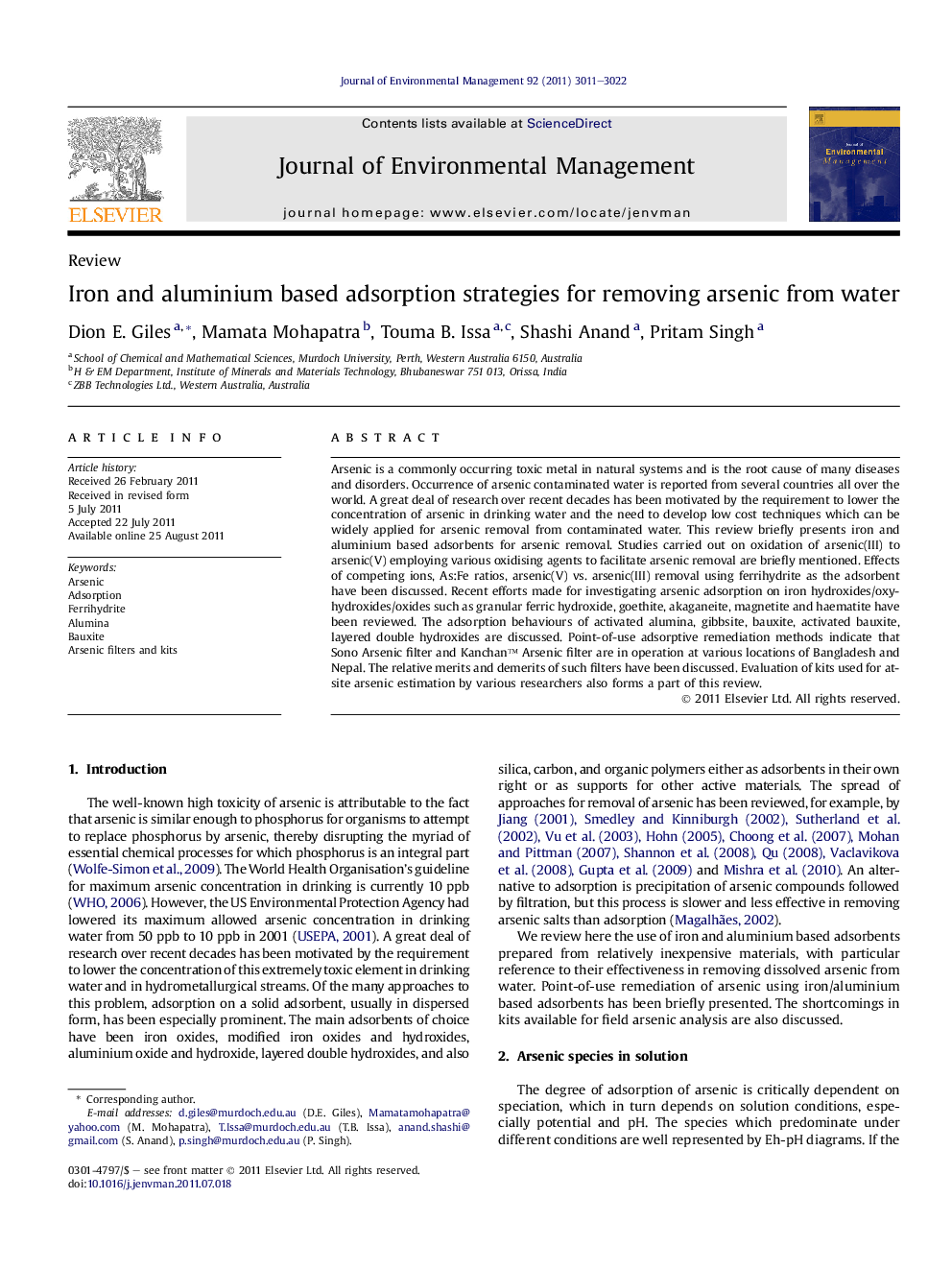| Article ID | Journal | Published Year | Pages | File Type |
|---|---|---|---|---|
| 1057105 | Journal of Environmental Management | 2011 | 12 Pages |
Arsenic is a commonly occurring toxic metal in natural systems and is the root cause of many diseases and disorders. Occurrence of arsenic contaminated water is reported from several countries all over the world. A great deal of research over recent decades has been motivated by the requirement to lower the concentration of arsenic in drinking water and the need to develop low cost techniques which can be widely applied for arsenic removal from contaminated water. This review briefly presents iron and aluminium based adsorbents for arsenic removal. Studies carried out on oxidation of arsenic(III) to arsenic(V) employing various oxidising agents to facilitate arsenic removal are briefly mentioned. Effects of competing ions, As:Fe ratios, arsenic(V) vs. arsenic(III) removal using ferrihydrite as the adsorbent have been discussed. Recent efforts made for investigating arsenic adsorption on iron hydroxides/oxyhydroxides/oxides such as granular ferric hydroxide, goethite, akaganeite, magnetite and haematite have been reviewed. The adsorption behaviours of activated alumina, gibbsite, bauxite, activated bauxite, layered double hydroxides are discussed. Point-of-use adsorptive remediation methods indicate that Sono Arsenic filter and Kanchan™ Arsenic filter are in operation at various locations of Bangladesh and Nepal. The relative merits and demerits of such filters have been discussed. Evaluation of kits used for at-site arsenic estimation by various researchers also forms a part of this review.
► Arsenic removal from water has been of interest to researchers as it is a commonly occurring toxic metal in natural systems and is the root cause of many diseases and disorders. ► In the present review article iron and aluminium based technologies have been presented. ► The R & D efforts made for arsenic removal have been discussed for iron and aluminium oxides/hydroxides/oxyhydroxides. ► Point-of-use technologies prevalent in Bangladesh and Nepal are presented. ► Merits and demerits of kits for arsenic analysis are described.
